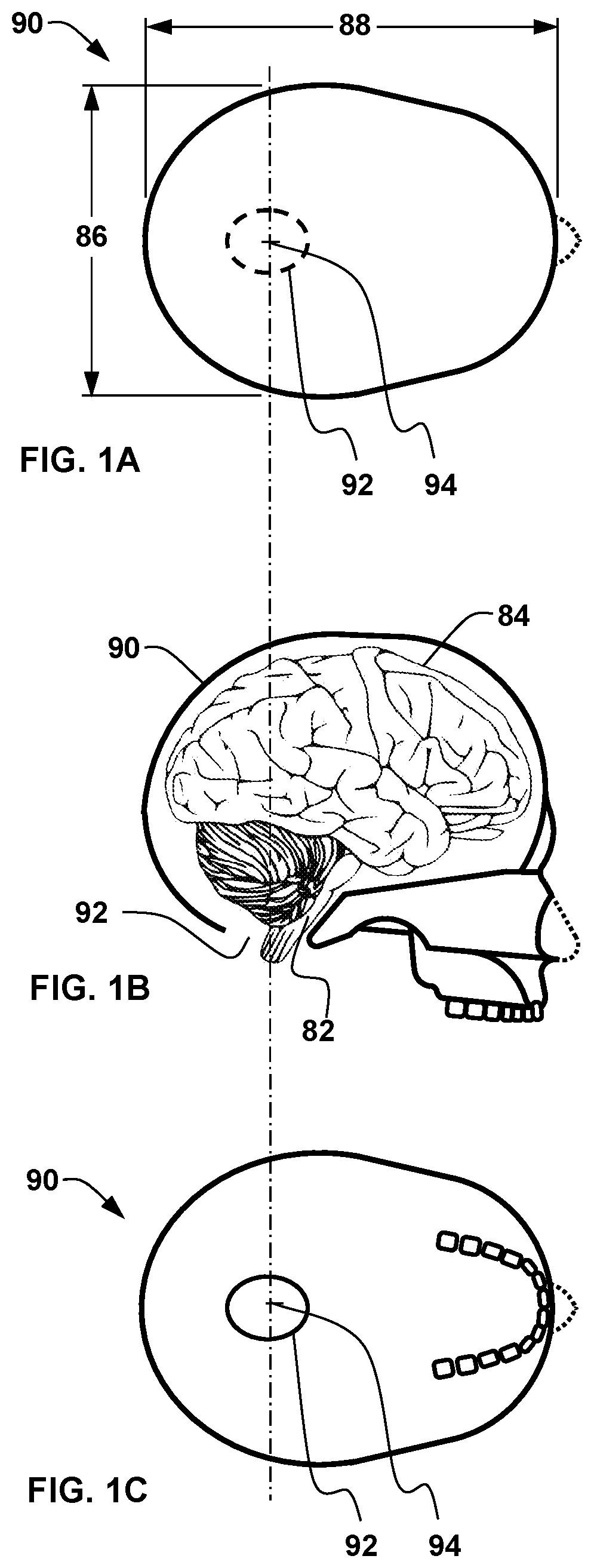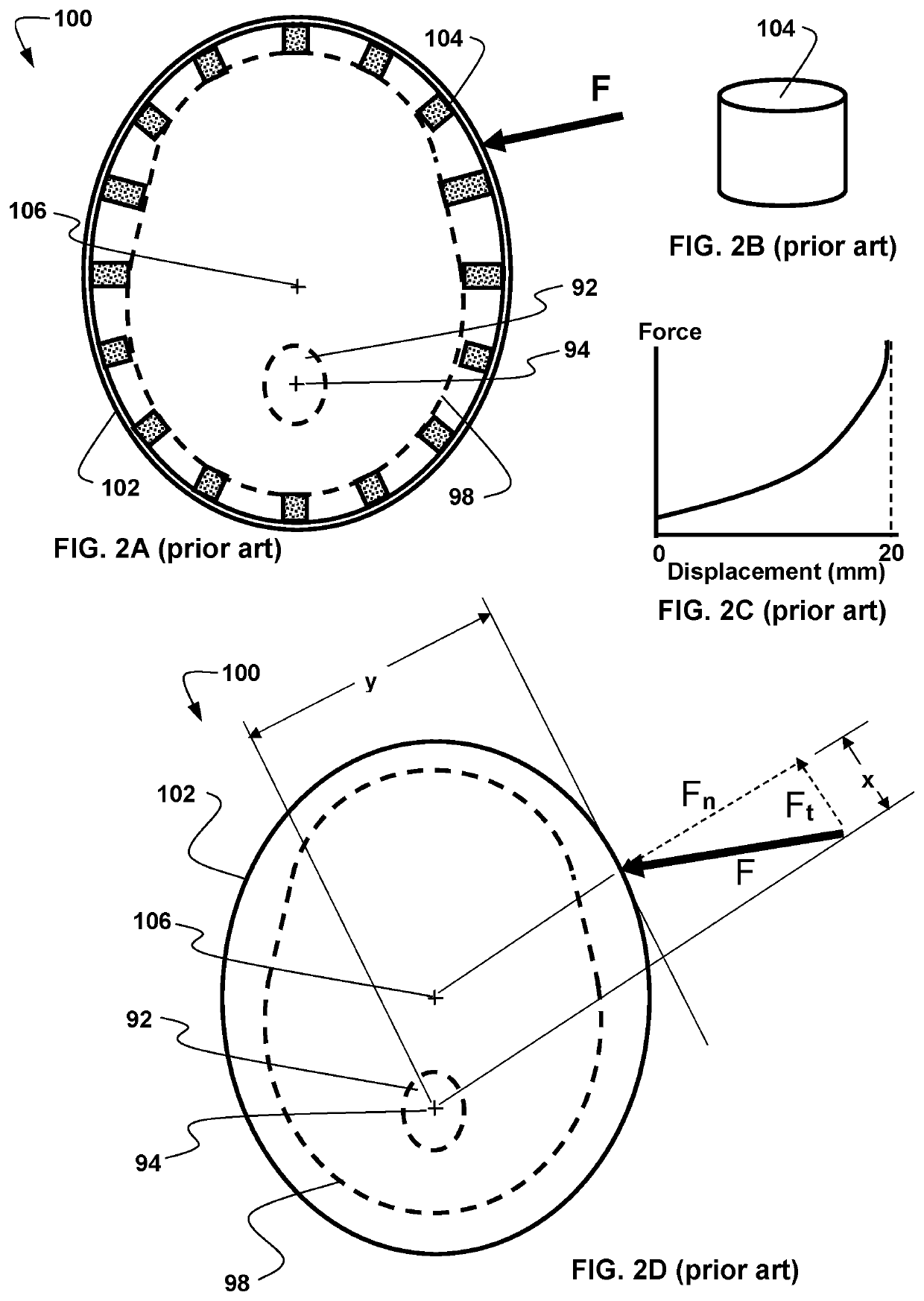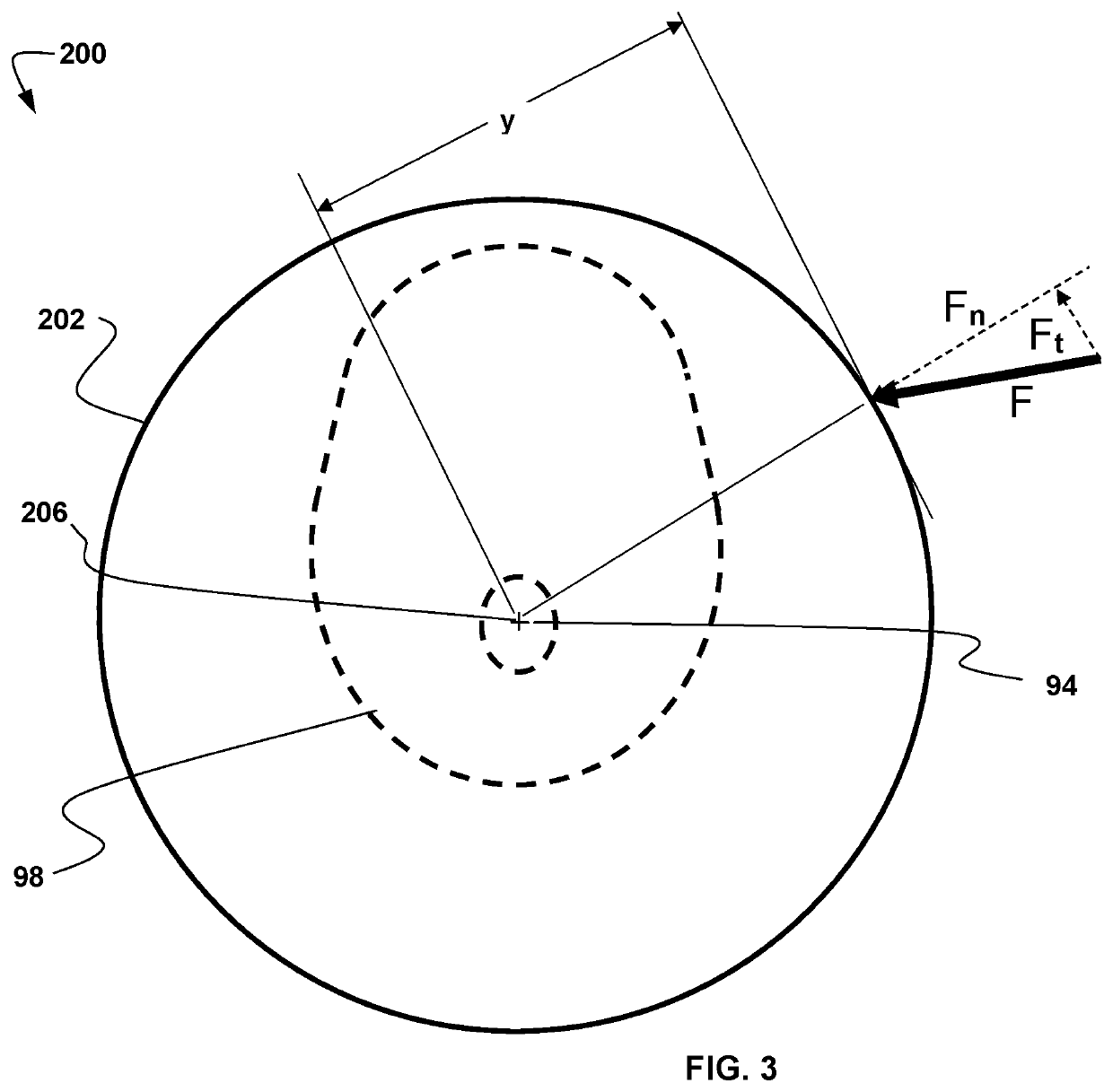Ocular-performance-based head impact measurement applied to rotationally-centered impact mitigation systems and methods
a technology of impact mitigation and applied in the field of ocular performance-based head impact measurement applied to rotationally-centered impact mitigation systems and methods, can solve problems such as visual problems, reading problems, oculomotor abnormalities, etc., and achieve the effect of reducing the chance of one or more concussions
- Summary
- Abstract
- Description
- Claims
- Application Information
AI Technical Summary
Benefits of technology
Problems solved by technology
Method used
Image
Examples
embodiment 300
[0183]FIG. 5C shows the result of a side impact F on the helmet embodiment 300, that was also shown in FIG. 5A. More specifically, this shows the movement of the helmet shell from an initial position 202A to a final position 202B, on the opposite side, as a result of the applied force F. This applied force F causes a lateral displacement shown as dimension D in FIG. 5C. Examples of the displacement of the impact pads that were shown at 304 and 306, in FIG. 5A can be seen by dotted lines in FIG. 5C.
[0184]Referring to FIGS. 6A, 6B, and 6C, detailed views of elements of the alternate embodiment (300 in FIG. 5A) are shown. Among the elements from FIG. 5A that are shown in FIG. 6A, FIG. 6B, and FIG. 6C are the pad frame 205, a first elastically-resilient impression 304, a second elastically-resilient impression 306, and a shell 202. These elements (pad frame 205, first elastically-resilient impression 304, second elastically-resilient impression 306, and a shell 202) can be described as ...
embodiment 500
[0213]FIG. 10A and FIG. 10B show a virtual reality (VR) goggles embodiment of a head-worn device for measuring human ocular performance. FIG. 10A shows the head-worn VR device 500, attached to a person's head 98, with a strap or headband 502. FIG. 10B shows the head-worn VR device 500, when looked at from the inside looking outward. In the augmented device shown in FIG. 8, the display (402) was a see-through display and it only covered one eye or part of an eye. In the VR device of FIG. 10A and FIG. 10B, shown at 500, the left virtual reality display, shown at 506 and right virtual reality display 507, are opaque and the person is typically completely immersed in the scene being displayed. Other than the difference in displays, the VR goggles embodiment 500, can have many of the same elements and configurations that were described with respect to FIG. 8 and FIG. 9, including but not limited to the head orientation sensor 404, the eye tracking video camera(s) 406 (of which there can ...
PUM
 Login to View More
Login to View More Abstract
Description
Claims
Application Information
 Login to View More
Login to View More - R&D
- Intellectual Property
- Life Sciences
- Materials
- Tech Scout
- Unparalleled Data Quality
- Higher Quality Content
- 60% Fewer Hallucinations
Browse by: Latest US Patents, China's latest patents, Technical Efficacy Thesaurus, Application Domain, Technology Topic, Popular Technical Reports.
© 2025 PatSnap. All rights reserved.Legal|Privacy policy|Modern Slavery Act Transparency Statement|Sitemap|About US| Contact US: help@patsnap.com



